Fish Day - nail the fin with the fish and get to know them better
Fish don't have fur and they don't purr, but they deserve attention - they are very interesting animals.


Learn more about our editorial process
.

Learn more about our editorial process
.

Learn more about our editorial process
.

Learn more about our editorial process
.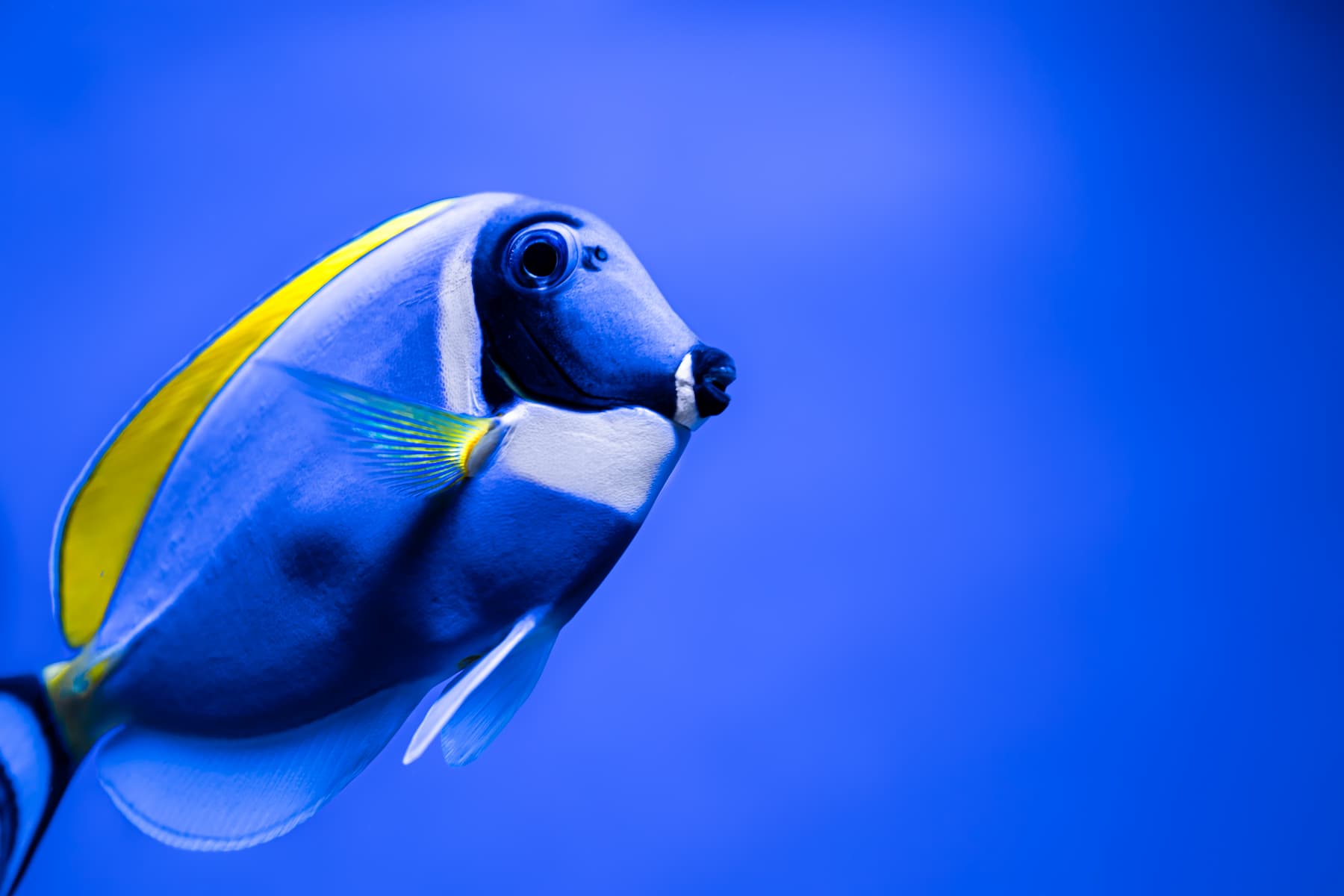
Why you can trust us
Articles on Natu.Care are written based on scientific research, data from government websites and other reliable sources. The texts are written in cooperation with doctors, nutritionists and other health and beauty experts. Articles are reviewed before publication and during significant updates.
.Learn more about our editorial process
.Information about advertisements
Content on Natu.Care may contain links to products from the sale of which we may receive a commission. When creating content, we adhere to high editorial standards and take care to be objective about the products discussed. The presence of affiliate links is not dictated by our partners, and we select the products we review ourselves completely independently.
.Learn more about our terms and Conditions
.Fish Day is the perfect opportunity to get to know these animals better. In the 21st century, some people continue to believe that the creatures have no voice, are dumb, don't feel pain, and that their presence on the plate only means... bones and mercury.
Fact, they don't have five octaves like Mariah Carey and can't solve a differential equation, but they can make sounds when they feel pain, remember where danger lurks and know how to use a stone to build a nest. And they are not all loaded with resistant mercury, but with valuable omega-3 fatty acids.
Don't be a bream. Learn about fish, the facts as well as the myths about them and why you should be a fish-conscious consumer.
From this article you will learn:
- What the idea of Fish Day is. .
- How much and what kind of fish do Poles eat most often.
- What are the most popular fish and how are they eaten?
- What are the healthiest fish. .
- How to choose fish wisely. .
- What instead of carp for the Christmas table. .
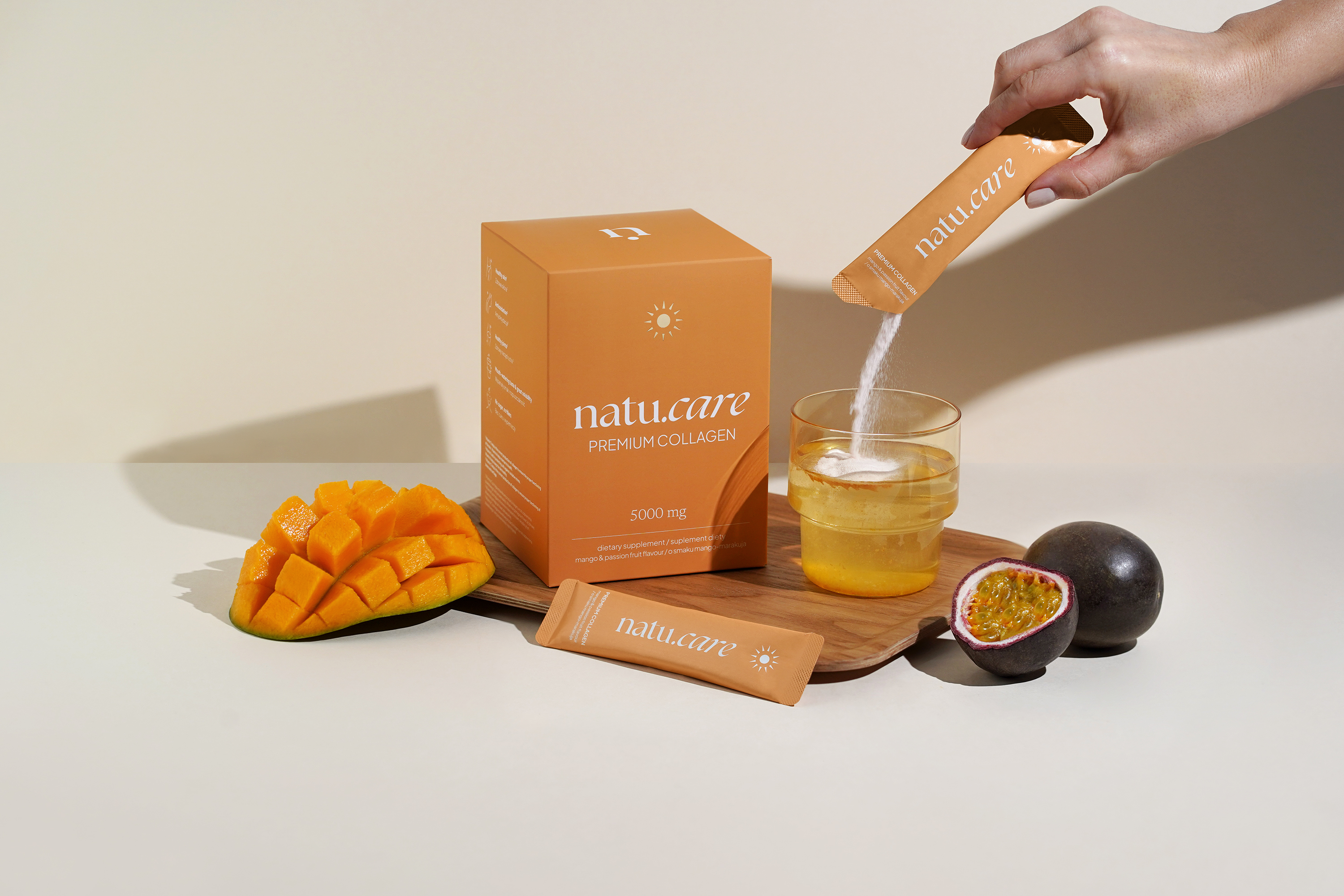
Sprawdź, za co pokochały go tysiące klientek Kolagen Premium (5000 mg) mango-marakuja -15% z kodem BLOG15
Natu.Care Kolagen Premium 5000 mg, mango-marakuja
Natu.Care Kolagen Premium dla zdrowia stawów, skóry, paznokci i włosów. Najlepsza przyswajalność. Optymalna dawka 5 000 lub 10 000 mg. Przebadany przez niezależne laboratorium.
Zobacz więcej
Wybrałam kolagen Natu.Care, ponieważ miał super opinie – a to było dla mnie bardzo ważne! Odkąd go stosuję, moja skóra znacznie się poprawiła i jest nawilżona, a na głowie pojawiły się nowe "baby hair".@Kasia S.
See also:
.
- World No Tobacco Day .
- Clean Air Day
- Food waste in Poland and worldwide
- Lung health after a pandemic
- National Kindergarten Day
- Bone Marrow Donor Day
- Great Bees Day
- Blood Donation Day
- Hug Day
- Of singles on Valentine's Day
Fish Day - what kind of holiday is it?
.
Fish Day falls 20 December and has been celebrated since 2003 thanks to an initiative by the Empathy Association and the Viva!and Foundation. The idea behind the day is to promote education about fish, which, contrary to myths, feel pain and deserve to be treated humanely. Fish Day also aims to inspire action to protect fish and the aquatic ecosystem.
The creators of Fish Day particularly draw attention to the annual drama of carp, which are a traditional Christmas Eve dish in Poland. The date of celebrating this day around Christmas is meant to prompt people to reflect on the inhumane treatment of live carp at outlets and consider switching to a plant-based diet.
This day is also an excellent opportunity to educate people about conscious fish buying and consumption, dispel myths and look at fish consumption statistics in Poland and around the world.
Maybe this year you'll forgo carp on Christmas Eve in favour of... tofu? And small-talk in the lift you'll start with a tidbit about the world's biggest fish (this option may be awkward, but try it)?
.
How much fish do Poles eat?
.
The answer is short: too little.
Fish, especially oily ones, are a treasure trove of nutrients and the best source of omega-3 acids: DHA and EPA. The official recommendation is to consume 1-2 portions of fish (approximately 300 g) per week. Theoretically, therefore, each Pole should close the year with 15.6 kg of fish eatenand.
According to 2020 FAO (Food and Agriculture Organization of the United Nations) data, the statistical Pole eats 12.27 kg of fish annually. By comparison, the world record holder is the Maldives, where for the same period citizens eat... 87.30 kg.
In Europe, Portugal reigns supreme - there, fish consumption is 59.36 kg per citizen per year. Europeans eat an average of 21 kg of fish, while the world average is around 20 kg. Check out the table below to see who eats the most fish per year on the old continentand.
10 countries with the highest fish consumption in Europe
. . .
|
Country . |
Number of fish consumed per year . |
|
Portugal . |
59.36 kg |
|
Norway |
50.57 kg |
|
Spain |
40.30 kg |
|
France |
33.64 kg |
|
Finland |
33.52 kg |
|
Lithuania |
31.89 kg |
|
Luxembourg |
31.47 kg |
|
Sweden |
31.34 kg |
|
Italy |
29.64 kg |
|
Denmark |
26.30 kg |
I know, I know - it's difficult for us to get to such quantities. We don't have a culture of eating fish in Poland, and the prices can be discouraging. You will think: what a surprise, Scandinavians or Iberians have fish right under their noses, which translates into availability and price - and you are right. However, statistics show that Poles are also eating more and more fish!
According to the OECD (Organisation for Economic Co-operation and Development), projections show that in 2030, global fish consumption will increase by 14.8%and. Poles are on the right track - in 2015 we ate just 10kg and now 12.27kg .
We have a podium... somewhere else
.The countries that dominate fish consumption underestimate ... potatoes. Poles eat more than 100kg per person per year, leaving Portugal or Norway far behindand. The losers in this potato comparison do not know what they are missing - baba, pancakes, kopytka, dumplings...
.Natu.Care Collagen Premium 5000 mg, mango & passion fruit

- Collagen content: 5000 mg marine collagen hydrolysate
- Additional active ingredients: vitamin C, low molecular weight hyaluronic acid (and L-theanine and coenzyme Q10 in cocoa flavoured collagen or vitamin A and vitamin E in mango–passion fruit flavoured collagen)
- Form: powder sachets
- Dose: 1 sachet per day
- Sufficient for: 30 days
Product description
Fish collagen from the Natu.Care brand in a dose of 5000 mg, based on certified ingredients of the best quality. Regular supplementation will positively influence the appearance of the skinóry, hairów and nails – they will be rebuilt and strengthened from the inside.
In addition to collagen, which is valuable for health and beauty, it also offers other active ingredients that help to maintain a youthful complexion, shiny hair and strong nails.
The formula contains a sufficient portion of the active ingredient to positively affect joints, the musculoskeletal system and immunity.
Natu.Care Premium Collagen is available in two flavours – Cacao Bloom and Rise&Shine. Both formulas are based on the following active ingredients: marine collagen hydrolysate, wild roseóbud extract and hyaluronic acid.
Additionally, Cacao Bloom contains natural L-theanine, coenzyme Q10 and defatted Dutch cacao. Rise&Shine instead contains vitamin E and vitamin A.
These are the best collagens in the world.
These best fish collagens on the market also rós taste – Cacao Bloom is a treat for chocolate lovers. Rise&Shine will appeal to those whoólike the refreshing taste of mangoófruit and passion fruit.
Pros and cons
Pros:
- Vitamin C supports the body's collagen production, enhancing its effectiveness.
- An effective dose of hyaluronic acid, which additionally supports skin hydration and joint health.
- Fish collagen absorbs 50% better. Additionally, the manufacturer specifies the fish species it is sourced from (Atlantic cod).
- The composition has been tested by the independent and accredited J.S. Hamilton laboratory.
- MSC (Marine Stewardship Council) quality certification, which confirms that the collagen source supports sustainable fishing practices.
Cons:
- None.
Additional information
Natu.Care's fish collagen receives praise for its delicious taste. You won't find the fishy aftertaste that often comes through in other collagens. Plus, you have two tasty flavors to choose from: cocoa and mango-passionfruit.
Active ingredients like coenzyme Q10, hyaluronic acid, and natural L-theanine provide anti-inflammatory and antioxidant benefits while slowing down aging processes.
User review
Super, after about 6 weeks of use, the skin on my face became noticeably firmer. Wonderful taste.
Ania ZalewskaNatu.Care customer
Natu.Care Premium collagen 10 000 mg, mango-maracuja

- Collagen content: 10,000 mg marine collagen hydrolysate
- Additional active ingredients: vitamin C, low molecular weight hyaluronic acid (and L-theanine and coenzyme Q10 in cocoa flavoured collagen or vitamin A and vitamin E in mango–passion fruit flavoured collagen)
- Form: powder sachets
- Dose: 1 sachet per day
- Sufficient for: 30 days
Product description
One of the strongest collagens on the market, whichós provides as much as 10,000 mg in a daily serving. This allows the formula to effectively support the condition of the skin, hair and nails.
With this supplement, you will support your beauty, which will allow you to visually stop the ageing process and feel a second youth!
Natu.Care Collagen Premium 10 000 mg comes in two flavours – cherry and mango-maracuja. Both formulas have the same product backbone – collagen, hyaluronic acid and vitamin C.
In the cherry version you additionally find glucosamine, chondroitin and Indian frankincense resin extract. Mango-maracuja, on the other hand, contains vitamin E and vitamin A.
Pros and cons
Pros:
- Tested collagen formula – SeaGarden, whose effects have been confirmed in clinical studies.
- Effective dose of hyaluronic acid, additionally moisturizing the skin and positively impacting joint health.
- Vitamin C supports the body’s natural collagen production.
- The composition has been tested by the independent and accredited J.S. Hamilton laboratory.
- The product has an MSC (Marine Stewardship Council) quality certification – the collagen source supports sustainable fishing practices.
Cons:
- None.
Additional information
Users praise Natu.Care Collagen Premium for the easy dissolvability of the powder.
User review
I noticed a significant improvement in my skin texture after a few weeks of taking collagen regularly. My complexion is now as soft as velvet!
Natu.Care Collagen Premium 10000 mg, cherry

- Collagen content: 10,000 mg of hydrolyzed bovine collagen
- Additional active ingredients: vitamin C, low molecular weight hyaluronic acid, glucosamine, chondroitin, extract of Indian frankincense resin (boswellia serrata)
- Form: powder sachets for drinking
- Serving: 1 sachet per day
- Lasts for: 30 days
Product description
One of the strongest collagens on the market, providing as much as 10,000 mg per daily serving. This product can effectively support the condition of joints, skin, hair, and nails.
With this supplement, you will support your skeletal and joint system as well as your beauty, helping you visually halt the aging process and feel rejuvenated!
Pros and cons
Pros:
- The daily portion of collagen is very large – as much as 10,000 mg.
- Proven collagen formula – COLLinstant, whose effectiveness has been confirmed in clinical studies.
- Effective dose of hyaluronic acid, which additionally moisturizes the skin and positively affects joint health.
- Vitamin C supports the body's natural collagen production.
- Glucosamine is a fundamental building block of compounds found in joint cartilage and a component of collagen that gives elasticity to connective tissue in tendons.
- Chondroitin is a natural component found in the human body, mainly in cartilage. This large molecule (mucopolysaccharide) has the ability to absorb water, which helps maintain the elasticity and resilience of cartilage.
- Frankincense resin extract supports blood circulation and joint mobility and reduces their stiffness. It may help alleviate inflammatory conditions.
- The composition has been tested by the independent and accredited J.S. Hamilton laboratory.
Cons:
- None.
Additional information
Users praise Natu.Care Collagen Premium for the easy dissolving of the powder.
Premium Sodium Butyrate
Product description
Premium Sodium Butyrate is a natural support for your digestive system. With a high dose of butyric acid (940 mg), it supports the regeneration of the intestinal mucosa, improving gut health and function, and aids in the absorption of nutrients. By taking care of your intestines, you're taking care of the health of your entire body.
Studies involving people suffering from irritable bowel syndrome confirm that sodium butyrate is ideal for supporting issues related to bacterial flora imbalances (for example, after antibiotic therapy), constipation and diarrhea, inflammation of the intestinal mucosa, or a diet low in fiber.
Premium Sodium Butyrate capsules are made using the innovative DRcaps® technology. This guarantees that the active ingredients in the product are protected from the destructive effects of stomach acids and digestive enzymes. As a result, we can be sure that the beneficial ingredients are released in the small intestine and are fully absorbed by our body.
Premium Sodium Butyrate from Natu Care is 100% tested, and its composition contains only the highest quality raw materials.
Pros and cons
Pros:
- Supports digestive system function
- Helpful for various gastrointestinal conditions, including IBS
- High dose of butyric acid in each capsule
- Eco-friendly, clean, and tested composition
- Free from added sugar, gluten, GMOs, and lactose
- Innovative capsule technology - DRcaps
Cons:
- None
Additional Information
Take 3 capsules daily at any time of the day, preferably with a meal. Swallow the capsules whole with water.
Premium Sodium Butyrate is intended for adults.
The product should be used under medical supervision.
User review
I've been using the product for 2 weeks. My stomach feels lighter, and my digestion has improved. I recommend it.
Natu.Care Premium Magnesium + Vitamin B6

- Magnesium content per day: 305 mg
- Additional active ingredients: Vitamin B6 (2.1 mg)
- Form: capsules
- Serving size: 3 capsules per day
- Sufficient for: 30 days
Product description
The Premium Magnesium + Vitamin B6 dietary supplement is a comprehensive product that combines three organic forms of magnesium (citrate, malate, and diglycinate) and vitamin B6 in highly absorbable forms.
Magnesium is an essential mineral without which our bodies cannot function properly. It supports the immune, nervous, and muscular systems, maintains electrolyte balance, and is involved in cell division and the regulation of mental functions.
Research shows that magnesium supplementation is even more effective when accompanied by vitamin B6, which is included in our product. Vitamin B6 is responsible for the proper functioning of the nervous and immune systems, as well as the proper functioning of the heart.
If you want to safely get rid of feelings of fatigue, concentration problems, hair loss, muscle cramps, trembling, or irritability, reach for Premium Magnesium from Natu.Care, tested by the independent, certified laboratory J.S. Hamilton Poland.
Pros and cons
Pros
- Supports the proper functioning of the nervous and immune systems.
- Reduces feelings of fatigue and tiredness.
- Maintains proper psychological functions.
- The purity of the ingredients (free from anti-caking agents, artificial fillers, and additives such as titanium dioxide, microcrystalline cellulose, talc, magnesium stearate, and silicon dioxide) has been confirmed by laboratory tests.
- High absorption of ingredients.
- Soft capsules that are easy to swallow.
- Suitable for vegetarians and vegans.
Cons
- None.
Additional information
Take with a meal, 3 capsules per day.
The capsules should be taken with at least 250 ml of water.
If you have trouble sleeping, it is advisable to take 1 capsule in the morning and 2 capsules in the evening, no later than 4 hours before bedtime.
Avoid combining with products high in calcium (milk, yogurt, cheese), as this may negatively affect magnesium absorption.
Pregnant and breastfeeding women should consult a doctor before starting supplementation.
User review
I’m very impressed with the speed of delivery. The product itself is of high quality and absorbs well. After two weeks of supplementation, I’ve noticed a significant improvement in muscle recovery, especially during periods of intense training. I highly recommend it!
Product description
The dietary supplement contains omega-3ᵀᴳ, or omega-3 acids in the form of trójglyceridesów. Scientific studies suggest that this form of fatty acidsós up to 2 times better absorbed than the estersós present in many dietary supplements on the market. This means that you are assured of their effectiveness and of supplying yourself with valuable omega acids.
Fatty acids omega-3 are derived from wild anchovy oil. It is a rich source of healthy fats that are essential for the health of the cardiovascular, immune and nervous systems, as well as the proper function of vision, joints muscles.
Scientific research suggests that wild anchovies are a good source of healthy fats.
Scientific research also suggests that an adequate intake of omega-3 fatty acidsós protects against and supports the treatment of depression and anxiety disorders. In addition, omega-3s influence the hydration and appearance of the skinóry and support healthy sleep.
.
The formula contains a total of 750 mg of EPA+DHA acidsós, which is three times higher than the recommended minimum of 250 mg for the Polish population. Omega-3 TG Premium has studies indicating that its TOTOX is 9, which is a very good result.
Supplementation of omega-3 fatty acidsóis recommended for anyone who does not eat 1–2 portions (approximately 300 g) of oily fish per week. Children during growth, seniors, physically active people, vegans and vegetarians, as well as patients undergoing cardiovascular treatment and prevention of heart disease also have an increased need.
Pros and cons
The dietary supplement contains omega-3ᵀᴳ, or omega-3 acids in the form of trójglyceridesów. Scientific studies suggest that this form of fatty acidsós up to 2 times better absorbed than the estersós present in many dietary supplements on the market. This means that you are assured of their effectiveness and of supplying yourself with valuable omega acids.
Fatty acids omega-3 are derived from wild anchovy oil. It is a rich source of healthy fats that are essential for the health of the cardiovascular, immune and nervous systems, as well as the proper function of vision, joints muscles.
Scientific research suggests that wild anchovies are a good source of healthy fats.
Scientific research also suggests that an adequate intake of omega-3 fatty acidsós protects against and supports the treatment of depression and anxiety disorders. In addition, omega-3s influence the hydration and appearance of the skinóry and support healthy sleep.
.
The formula contains a total of 750 mg of EPA+DHA acidsós, which is three times higher than the recommended minimum of 250 mg for the Polish population. Omega-3 TG Premium has studies indicating that its TOTOX is 9, which is a very good result.
Supplementation of omega-3 fatty acidsóis recommended for anyone who does not eat 1–2 portions (approximately 300 g) of oily fish per week. Children during growth, seniors, physically active people, vegans and vegetarians, as well as patients undergoing cardiovascular treatment and prevention of heart disease also have an increased need.
Additional information
The dietary supplement contains omega-3ᵀᴳ, or omega-3 acids in the form of trójglyceridesów. Scientific studies suggest that this form of fatty acidsós up to 2 times better absorbed than the estersós present in many dietary supplements on the market. This means that you are assured of their effectiveness and of supplying yourself with valuable omega acids.
Fatty acids omega-3 are derived from wild anchovy oil. It is a rich source of healthy fats that are essential for the health of the cardiovascular, immune and nervous systems, as well as the proper function of vision, joints muscles.
Scientific research suggests that wild anchovies are a good source of healthy fats.
Scientific research also suggests that an adequate intake of omega-3 fatty acidsós protects against and supports the treatment of depression and anxiety disorders. In addition, omega-3s influence the hydration and appearance of the skinóry and support healthy sleep.
.
The formula contains a total of 750 mg of EPA+DHA acidsós, which is three times higher than the recommended minimum of 250 mg for the Polish population. Omega-3 TG Premium has studies indicating that its TOTOX is 9, which is a very good result.
Supplementation of omega-3 fatty acidsóis recommended for anyone who does not eat 1–2 portions (approximately 300 g) of oily fish per week. Children during growth, seniors, physically active people, vegans and vegetarians, as well as patients undergoing cardiovascular treatment and prevention of heart disease also have an increased need.
Expert opinion
The dietary supplement contains omega-3ᵀᴳ, or omega-3 acids in the form of trójglyceridesów. Scientific studies suggest that this form of fatty acidsós up to 2 times better absorbed than the estersós present in many dietary supplements on the market. This means that you are assured of their effectiveness and of supplying yourself with valuable omega acids.
Fatty acids omega-3 are derived from wild anchovy oil. It is a rich source of healthy fats that are essential for the health of the cardiovascular, immune and nervous systems, as well as the proper function of vision, joints muscles.
Scientific research suggests that wild anchovies are a good source of healthy fats.
Scientific research also suggests that an adequate intake of omega-3 fatty acidsós protects against and supports the treatment of depression and anxiety disorders. In addition, omega-3s influence the hydration and appearance of the skinóry and support healthy sleep.
.
The formula contains a total of 750 mg of EPA+DHA acidsós, which is three times higher than the recommended minimum of 250 mg for the Polish population. Omega-3 TG Premium has studies indicating that its TOTOX is 9, which is a very good result.
Supplementation of omega-3 fatty acidsóis recommended for anyone who does not eat 1–2 portions (approximately 300 g) of oily fish per week. Children during growth, seniors, physically active people, vegans and vegetarians, as well as patients undergoing cardiovascular treatment and prevention of heart disease also have an increased need.
Natu.Care Vitamin D 2000 UI
Product description
Vitamin D plays a crucial role in our health and well-being. It affects calcium and phosphate metabolism, which translates to healthy bones and teeth. It also helps regulate the immune system, and studies indicate its influence on the functioning of the nervous system.
Vitamin D, although called a “vitamin,” is actually a prohormone that our body produces on its own, primarily under the influence of sunlight. Unfortunately, our modern lifestyle contributes to deficiencies of this essential vitamin. Working in enclosed office buildings, using (necessary!) SPF creams, and covering the body with clothing all make it very difficult, if not impossible, to obtain adequate levels of vitamin D from sunlight. This is why appropriate, year-round supplementation is so crucial.
Vitamin D from Natu.Care is a well-tested vitamin D3 suspended in safflower oil, a plant known for its numerous health benefits. The convenient, easy-to-swallow capsule will make supplementation a part of your daily, healthy routine, improving your overall well-being.
Pros and cons
Pros:
- Ensures proper functioning of the immune system
- Supports the maintenance of healthy bones and teeth
- Maintains proper heart, kidney, and muscle function
- Tested by an independent, certified laboratory
- Convenient and easy-to-swallow capsule
- Clean composition - free from added sugar, gluten, GMOs, lactose, and without preservatives or colorants
Cons:
- None.
Additional Information
Pregnant women and breastfeeding mothers should consult a doctor before using the product. This dietary supplement is intended for a healthy adult population up to the age of 75.
Collagen Booster - Glow Stories

- Active ingredients: bamboo shoot extract, Quatrefolic®, L-Methionine, L-cysteine, vitamin E, vitamin A, niacin (vitamin B3), vitamin B6, vitamin B2 (riboflavin), biotin, zinc, copper
- .
- Form: capsules
- .
- Dose: 1 capsule per day
- .
- Sufficient for: 60 days
- .
Product description
A dietary supplement containing vitamins, minerals and plant extracts thatósupport the skinóhand, hair and nails. The product is especially distinguished by the form of folate – it is Quatrefolic, whichós absorbed very well and is natural.
In addition to valuable vitamins and minerals, such as vitamin A, E, B3, B2 and biotin, the formula contains bamboo shoot extract, whichóry further enhances your beauty.
Pros and cons
A dietary supplement containing vitamins, minerals and plant extracts thatósupport the skinóhand, hair and nails. The product is especially distinguished by the form of folate – it is Quatrefolic, whichós absorbed very well and is natural.
In addition to valuable vitamins and minerals, such as vitamin A, E, B3, B2 and biotin, the formula contains bamboo shoot extract, whichóry further enhances your beauty.
Additional information
A dietary supplement containing vitamins, minerals and plant extracts thatósupport the skinóhand, hair and nails. The product is especially distinguished by the form of folate – it is Quatrefolic, whichós absorbed very well and is natural.
In addition to valuable vitamins and minerals, such as vitamin A, E, B3, B2 and biotin, the formula contains bamboo shoot extract, whichóry further enhances your beauty.
What is the most popular fish in Poland?
.
Here the answer is also short: the good ones, but not always the ones, what you need.
.

According to the Institute of Agricultural and Food Economics Polish people's favourite fish and average annual per capita consumption isand:
- herring - 2.73 kg .
- mintail - 2.04 kg .
- mackerel - 1.16 kg .
- beef - 1.01 kg
- sprat - 1.09 kg
- tuna - 0.98 kg
- cod - 0,96 kg .
Unfortunately, Poles also eat a lot of processed canned or smoked fish, as well as... fish fingers. However, these are not healthy choices.
Canned, smoked fish and fish fingers are processed products with less nutritional value and lower quality. They may contain contaminants, such as bisphenol or aluminium, which gets in from the cans. Frequent consumption of canned foods exposes you to greater exposure to these compounds..
 .
.
Julia SkrajdaDietitian
.Puffed fish fingers are nutritionally poor, contain unnecessary additives and sometimes the coating is disproportionately heavier than the fish - manufacturers know how to save money in the production process.
Why don't Poles buy fish?
.
I would eat it, and I'm afraid to. I have piranha in my pocket. I prefer schaboszczak.
Polish people don't eat fish for many reasons.
.
The most commonly mentioned of these areand:
.
- Price. While tinned fish is reasonably cheap (but not so healthy) and for a 200-300g tin you will pay around £6 -14, for a 100g flake of Norwegian salmon you have to give as much as £13. The calculations are simple.
- Fears of contamination. Fish the devil is in the details - yes, there are fish extremely rich in mercury or lead, and eating tinned fish once a day is not healthy.
- Bones; I know what it's like for someone when a small, mischievous bone can ruin a meal. Sometimes it is even dangerous to life and health.
- I know how you feel.
- Fresh produce; The smell of stale fish can still haunt for hours after being discarded. Poles don't always know how to judge the freshness of a product and how to store it.
- We prefer a different kind of meat. According to FAO data from 2020, Poles ate 88.71 kg of meat (poultry, beef, pork, horse meat, meat from all other domestic or wild animals such as camels, rabbits, reindeer and game animals were taken into account)and. .
- Lack of ideas on how to cook fish. It is much easier to fry a cutlet or meat for pasta than to come up with a tasty recipe with fish. Fish also doesn't go well flavour-wise with as many additives or seasonings as meat does. And sometimes the whole estate will feel that there will be fish for dinner. .
How to increase the amount of fish in your diet? Proven tips
.
We have complained, now let's see the counter-arguments to the above reasons for not eating fish:
.
- Price. Take advantage of price reductions and offers like 2+1, and freeze the fresh fish you buy. I have noticed that fish promotions at popular discounters are cyclical. .
- Fear of contamination. Choose fish that is low in mercury (read about them in my ranking) and from clean, legal, certified sources. .
- Bones; It's good to be aware of which fish have a lot of bones and eat them slowly, mindfully, savouring the meal. You can learn how to fillet skilfully from the many videos available online. .
- Fresh produce. Learn to recognise fresh fish. It has bright pigment, shiny skin, with little mucus, convex, unclouded and shiny eyes, firm flesh, bright red gills, and does not smell. Fish covered with a thick layer of uneven ice glaze has probably already been thawed and refrozen, so do not take such. .
- Another type of meat. Try to swap at least one meal a week for fish, such as instead of chicken salad or a minced cutlet. Indulge your palate and provide it with new flavours. .
- No idea how to prepare fish. You are sure to enjoy fish in some form - in a salad, in a pastry, in a tortilla, stewed or in a soup. Look for inspiration in the recipes. .
From my experience at work, I see that Poles are afraid of spices, do not know how to season and are not familiar with many flavours. I encourage you to experiment, there are plenty of suggestions on the internet and surely everyone will find their own flavours and the fish will not be bland..
 .
.
Julia SkrajdaDietitian
.How to minimise the smell of fish when preparing it?
.
The nutritionist advises:
.
Add fresh rosemary or thyme to the fat in which you fry the fish, and add herb butter at the end of frying after pouring off the fat. You can also place a bowl of white vinegar or wine vinegar next to the pan while frying.
Light scented candle or boil water with cinnamon, clove, cardamom or ginger in a pot. After eating the fish, pour hot water over the dishes (pans, plates). Throw away any leftover fish in a sealable bin. If you want to keep the fish in the fridge, place it in a ziplock bag or container with a lid.
If you have a small kitchen or kitchenette, use a regular fan - the kind we pull out in summer when it's hot. The fan will 'shuffle' that air - adds nutritionist.
Fish have no voice and other fish myths
.
Ah, those suggestions - repeated so many times become true. And in doing so, we take away the fish's voice, feelings and laugh at their... short memory.
It's time to dispel the myths - because if you believe them, the fish have a laugh at you. And he'll reproach you for it in a few years.
There's a lot more to come.
.
Every fish is healthy to eat.
|
Mit |
Factand |
|
Fish have no voice |
Fish have the ability to make sounds, but they are not audible to the human ear. In order for a human to hear them, they have to be specially processed (there are plenty of videos on the internet, listen for yourself). |
|
Fish do not feel pain because they do not have a sufficient density of the relevant nerve fibres |
Fish have so-called nociceptors (pain receptors) found in humans and other animals. Scientists have identified up to 20 types of them. In scientific studies, fish that were injured showed anxiety and nervousness. They do not feel pain in exactly the same way as humans, but they do suffer and feel discomfort. |
|
Fish have a poor memory . |
Dory's ten-second memory from Where's Nemo is a damaging myth. Fish have a good memory, and the goldfish remembers various situations and dangers from even a few weeks ago. He associates places, other animals and has his own habits. |
|
Fish are dumb . |
|
|
Fish is not meat |
From a biological point of view, fish is meat, regardless of what some vegetarians or ... the Polish Episcopate think, because according to them fish is considered a Lenten dish (i.e. no meat). |
|
Every fish is healthy . |
Not every fish is healthy to eat. Some contain high levels of contaminants and heavy metals - you should avoid them. |
|
Frozen fish has no nutritional value . |
Freezing is one of the most effective ways of preserving food. In the case of fish, the process preserves freshness while its nutritional value remains intact. The key is proper storage and the defrosting process. |
|
Canned fish is healthy . |
Canned fish is a processed product high in preservatives and salt. While a can a week will not be harmful, more frequent consumption is unhealthy. It is better to choose fresh fish. |
Interesting facts about fish
.
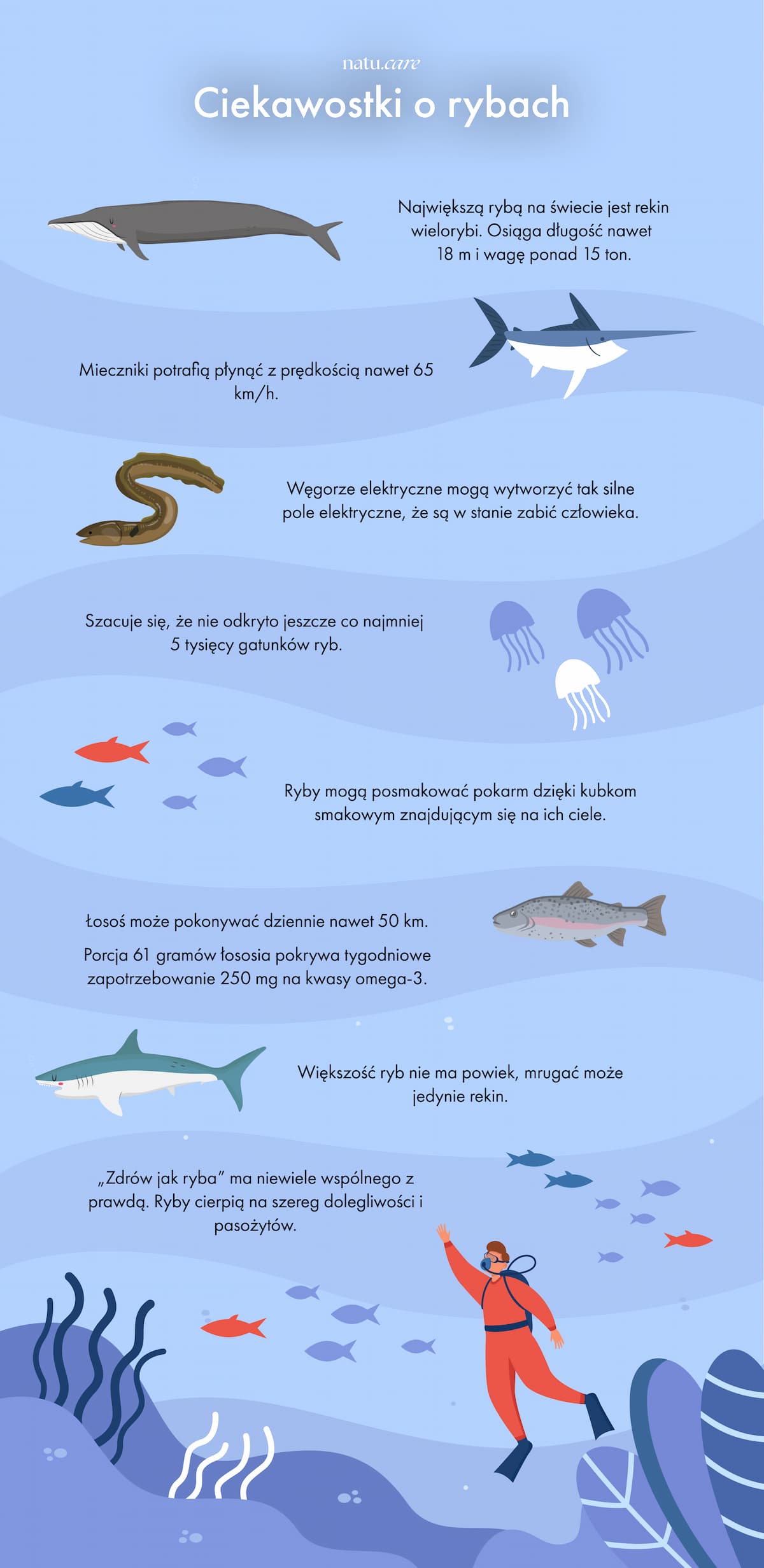
- The largest fish in the world is the whale shark. It reaches lengths of up to 18 m and weights more than 15 tonnes.
- The world's largest fish is the whale shark.
- Swimmers can swim at speeds of up to 65 km/h.
- The world's largest fish is the electric whale shark.
- Electric whale sharks can produce such a strong electric field that they are capable of killing a human.
- It is estimated that at least 5,000 species of fish have yet to be discovered.
- It is estimated that at least 5,000 species of fish have yet to be discovered.
- Fish can taste food thanks to taste buds located on their body.
- Salmon can travel as far as 50 km per day.
- Salmon can travel as far as 50 km per day.
- A serving of 61 grams of salmon covers a weekly requirement of 250 mg of omega-3 fatty acids.
- Most fish do not have eyelids, only a shark can blink. .
- "Healthy as a fish" has little to do with the truth. Fish suffer from a wide range of ailments and parasites.
- .
Healthiest fish - ranking
.
Your plate should include fish:
.
- low in contaminants,
- from wild sources,
- rich in nutrients, and
- rich in omega-3 acids, .
- with a high content of vitamins and minerals.
- wild-caught fish.
Which fish meet these criteria?
- .
Salmon
- .
Pink, glistening, and in the adverts usually in the embrace of the handsome Norwegian. The ranking of the healthiest fish proudly opens with salmon.
It's a great source of healthy fats omega-3 and omega-6, vitamin A, vitamin D and iodine and selenium. Salmon is also an excellent source of protein -you'll find up to 20g of well-absorbed protein in 100g. The calorific value of this fish depends on its origin and form (fresh, smoked), and averages around 200 kcal per 100 g.
- .
What kind of salmon to buy? Choose fresh, wild salmon instead of farmed salmon of unknown origin. Wild salmon is referred to as 'Pacific' or 'Alaskan'. The names 'Atlantic', 'Norwegian' or 'Jurassic' appear on farmed salmon products.
Pay attention to the certifications - this is a valuable tip. The green ASC symbol indicates salmon products from responsible, legal and organic farms. The blue MSC logo indicates wild salmon.
This should be avoided!
.Frequent consumption of smoked salmon can be detrimental to your health, due to the carcinogenic nitrosamine precipitated in the meat during processing. Also avoid salmon-based products, such as pastes or spreads - they usually do not even 'stand next to salmon' and are highly processed.
Macrella
- .
One of the most widely eaten fish in Poland. It is abundant in omega-3 fatty acids - in 100 g it contains around 3000-4000 mg of healthy fats (depending on source and form). It is also a great source of selenium, phosphorus, potassium, vitamins A and D and B12. It makes an excellent dietary protein supplement (approximately 18g protein per 100g) and is filling.
Mackerel is a treasure trove of selenium. Fresh fish contains 44.1 µg of selenium in 100 g, which covers up to 80% of the daily requirement for this compound. Selenium plays an important role in the production of hormones thyroid.
This fish contains large amounts of phosphatidylserine. This is an organic compound recognised as being so-called nootropic, meaning that it has a positive effect on brain function, cognitive function and memory.
Polish people love mackerel, but more often reach for smoked rather than fresh. Unfortunately, this form, although delicious, is not a healthy choice.
Polish people are more likely to use smoked mackerel than fresh.
Smoked mackerel is a processed product high in salt, purine, histamine - treat this product very recreationally and taste the fresh meat from this fish..
 .
.
Julia SkrajdaDietitian
.Dorsz
- .
The lean, low-calorie (about 85 kcal/100 g) fish contains valuable omega-3 and omega-6 fatty acids. It will also provide you with B vitamins: B12, B6, niacin, as well as vitamins E, A and C. It is also a good source of phosphorus, potassium, selenium and other micronutrients.
Interestingly, lean fish such as cod 'absorb' fewer heavy metals compared to fatty fishand.vOnly more popular than cod itself is the oil extracted from it - tran.
- .
Tran is derived exclusively from the liver of Atlantic cod or other fish in this family. Other dietary supplements made from shark liver or whale liver are oils, not tranium. Don't be fooled!.
 .
.
Ilona Krzak Master of Pharmacy
Did you know that...
.Fish is a great source of collagenand. Many manufacturers choose this fish as the raw material for their dietary supplements.
Sardines
- .
Small but crazy. The inconspicuous fish is literally a 'calcium bomb' - in 100g it contains as much as 382 mg of the mineraland. It's estimated that many Poles may not be consuming enough calcium, so adding sardines to the menu is a natural and tasty way to supplement it.
The fish also contains healthy omega fatty acids and plenty of phosphorus, selenium and potassium. They are a small but excellent source of protein. In 100g you will eat around 22g of protein. Poles eat most canned sardines, which makes the fish whole (it contains bones, but you can eat it) and provides more nutritional value.
Sardines have the least tendency to absorb mercury and other heavy metals..
 .
.
Julia SkrajdaDietitian
.Rainbow trout
- .
The biggest competitor to salmon in shop fridges - both pink, shiny and delicious. Trout is low in sodium, so it's a healthy choice for those struggling with cardiovascular disease.
This fish contains 1200-1400 mg of omega-3 fatty acids and is an excellent addition to healthy fats in the diet. Trout is a complete, easily digestible source of protein and B vitamins, vitamin A and D, as well as phosphorus, potassium and selenium. It is relatively low in calories, containing around 160 kcal in 100 g.
- .
The consumption of trout in moderation is safe for pregnant women and children..
 .
.
Julia SkrajdaDietitian
.Tuna
- .
A great fish in the diet, but in moderation. Poles are keen to choose tinned tuna from shop shelves - it's a cheaper choice than salmon, for example, and has a long shelf life.
Tuna is a great choice.
Tuna provides a lot of B vitamins - thiamin (B1), niacin (B3) and pyridoxine (B6), as well as selenium, phosphorus, potassium and magnesium.
- .
Because tuna eats other small fish may already be contaminated with mercury, the metal can accumulate and concentrate in it, so moderate consumption is recommended. An adult should not eat more than 200g of tuna per week, and pregnant and lactating women should eat 100g.
Canned tuna contains low levels of mercury and is a relatively safe choiceand.
Tuna is the only canned fish with which we don't risk infection or heavy metal build-up. But, of course, the source of the fish is important here - while the tuna itself does not "pull" metals from the can, its catch source or species will be important when it comes to heavy metal content.
 .
.
Julia SkrajdaDietitian
.herring
- .
It is the most popular guest on Polish plates - on average we eat as much as 2.73 kg of herring a year. The healthiest form is, of course, fresh fish, but we love it in cream, under a quilt with cheese, in oil and, of course, after all herring likes to swim.
If you choose fresh herring, it's a good choice.
If you choose fresh herring, you will provide yourself with the most omega-3 fatty acids, vitamins A + E, B6, B12 and copper, zinc, iodine and phosphorusand.
- .
For the Christmas table, choose herring that does not swim in fat. Such can also be tasty and filling. Taste lighter versions - in yoghurt or a tomato and curry sauce. And of course, remember, you can't eat without bread. With butter.
Blacklist
The most contaminated fish are: butterfish, panga, swordfish, shark, tilapia, eel, orange roughy, marlinand.
And where is the carp?
- .
We are sentimental about carp. It's hard to break with tradition and not have it on the Christmas Eve table. However, it is not a fish rich in desirable omega-3 fatty acids. In addition, it contains a lot of bones and its consumption is troublesome.
Most controversial are carp farms - unfortunately, some of them do not care about the quality of their food or humane treatment. Stories of carp on antibiotics or steroids, crammed in tanks and eating faeces are not urban legends.
There is a lot of controversy about carp farms.
This is why you should choose carp from reliable sources. You will find many farms on the internet that boast certificates and care about the quality and conditions of the carp.
There is a lot to be found.
The tradition of carp in Poland
.After World War II, the Baltic fleet was devastated. Hilary Minc, the minister at the time, decided to set up and stock breeding ponds. Low maintenance costs were a major advantage of this solution. Carp could also be obtained as... a bonus at workand.
What's the deal with fish contamination?
- .
Many people do not eat fish, for fear of heavy metal contamination. Is that right? Yes, but - note, my favourite - it depends.
Some fish are extremely rich in mercury or lead, but there are also some whose consumption will be safe and beneficial to your health. You just need to be an informed consumer and know which fish and how much to eat per week.
The Marine Institute of Fisheries (MIR) has indicated which species of fish, and in what amounts, an adult can eat per week in order not to exceed the temporary tolerable intake of mercury and dioxinsand.
- .
Below is an example summary of common fish in the diet of Poles and their maximum safe weekly intake .
- .
|
Species of fish . |
Maximum quantity due to mercury |
Maximum quantity due to dioxins + DL-PCB |
|
Baltic Sea Cod |
2370 g |
950 g |
|
Baltic herring |
1700 g |
400 g |
|
Trout |
2040 g |
2500 g |
|
Smoked Baltic salmon |
1580 g |
75 g |
|
Smoked Norwegian salmon |
2800 g |
570 g |
|
Carp |
3000 g |
7000 g |
|
Smoked mackerel |
2235 g |
1170 g |
|
Tuna in oil |
1670 g |
2510 g |
Don't eat it!
If you notice an indentation on a tin of e.g. canned fish etc. (especially on the edge or seam) - throw it away. Oxygen and germs may have got inside it and spoiled the contents.
Discard.
What instead of fish for the Christmas table?
- .
Maybe it's time for something new? Surprise yourself with plant-based versions of popular dishes. Vegetables, tofu or mushrooms won't be bland if you season and cook them well.
Fish Greek-style celeriac
- .
Report for approximately 10 servings.
Ingredients - vege "fish":
- 1 kg celery .
- 2 litres of vegetable broth .
- 2 sheets of nori + 5 sheets to wrap the chops .
- 2 tbsp soy sauce .
- 4 bay leaves .
- 2 allspices .
- 1 teaspoon coriander seeds .
- salt and black pepper .
- for frying: vegetable milk or water, wheat or rice flour and vegetable oil .
- .
Ingredients for the "Greek-style" part:
- 1 onion
- 1 leek, white and light green part .
- 500 g carrots .
- 150 g parsley .
- 50 g celery .
- 2 allspices .
- 2 bay leaves .
- a pinch of chilli .
- vegetable oil .
- salt
- 1-2 cups water .
- 3-4 tablespoons tomato paste .
- Salt and black pepper .
- .
Making:
Vegan "fish":
- Peel the celery, cut in half and cut into 1 cm slices. In a large pot, bring the broth to a boil along with 2 sheets of nori seaweed, bay leaves, allspice, coriander and soy sauce. Add the celery slices to the boiling broth and cook until they are very soft, about 15-20 minutes. .
- Gently remove the soft celery slices and cool for a while. Meanwhile, cut the nori sheets into narrower strips, then prepare 2 bowls, pour some milk into one (no more than ⅓ cup) and pour flour into the other (no more than ½ cup).
- Sprinkle each celery slice with salt and pepper, wrap with a strip of nori and soak in the milk for a while - this will help the seaweed soften and stick better to the celery. Dip the celery slices prepared in this way gently into the flour. .
- In a large frying pan, heat the oil vigorously (1-2 tablespoons) and place the prepared celery slices. Fry on each side for about 2-3 minutes. .
- .
Sauce:
- Dice the onion, chop the leek into slices. Heat the oil in the bottom of a large saucepan and add the onion with the leek, bay leaf and allspice, sauté over a low heat until glazed.
- There is no need to add the leek.
- Meanwhile, peel and grate the remaining vegetables, then add them all to the saucepan along with a pinch of salt and the chilli. Sauté in a tablespoon of oil over a low heat for about 5-10 minutes, after which pour in half the amount of water from the recipe and simmer for another 5 minutes.
- Finally pour in the rest of the water, add the concentrate and a pinch of salt and pepper. Simmer for a final 5-10 minutes until the vegetables are very soft. .
- When the vegetable sauce is ready, spoon ⅓ of the sauce onto the bottom of the platter, arrange the celery fish slices on top of this, place a layer of sauce again, another layer of celery fish and a final layer of sauce. Set aside to chill in the fridge - it's best on the second day when the flavour has 'melded'. .
- .
The same can be done with the tofu version, just replace the celery with tofu and the preparation scheme will be exactly the same. Then, instead of 1 kg of celery, use 600 g of tofu (cut each tofu cube into 4 portions).
Nutritional values for 10 portions of fish
.Kcal 1425, protein 64.5 g, fat 40.9 g, carbohydrate 235.9 g, fibre 85.3 g
For 1 serving: 142.5 kcal, protein 6.45 g, fat 4.9 g, carbohydrate 23.59 g
For 1 serving.
In the version with tofu rather than celery (12 servings): Kcal 1929, protein 126.5 g, fat 85.9, carbohydrate 173.3 g, fibre 36.6 g; (1 serving): 161 kcal, protein 10.5 g, fats 7.2 g carbohydrates 14.4 g
- .
This is not a calorie bomb, but provided that you do not add flour, milk and fat to the breadcrumbs "by eye", but according to the values given in the recipe. The celeriac version has a lot more fibre and less fat, so if you are watching your kilocalories over the holidays, it is better to choose the celeriac version. In either option we get a nice portion of omega 3 and 6 fatty acids. In the version with tofu there is of course more protein and iron.
- .
Personally, I recommend the celeriac version more - it's delicious in this form. I wouldn't wait until Christmas to prepare it, and would get to work straight away!.
 .
.
Julia SkrajdaDietitian
.Herring in a vege version
- .
Report for approx. 4-6 servings
- .
Ingredients:
- .
Same 'herrings'
- 400 g oyster mushrooms .
- 1 l water
- 3 sheets of nori seaweed or 2 handfuls of dried Wakami seaweed .
- 10 grains of allspice .
- 10 black peppercorns .
- 4 bay leaves .
- 2 tablespoons soy sauce .
- clove
- a spoonful of apple cider vinegar or wine vinegar .
- salt
- 1-2 tbsp olive oil .
- .
Marinade marinade:
- a cup of vege cream (blanch a cup of cashew nuts + water + lemon juice + salt) or Greek yoghurt or 12% cream .
- spoon of mustard - e.g. honey mustard .
- apple (approx. 140 g) .
- 1-2 tbsp dried cranberries .
Making:
- .
1.Clean the mushrooms, cut off the harder legs, and cut the caps into "herring-like" pieces. Cut the seaweed into pieces the same size as the herring.
2.
- Pour water, soy sauce, add 2 teaspoons salt and seaweed into a pot. Cook over low heat for half an hour. Remove the seaweed, but do not discard it, and add the oyster mushrooms to the boiling stock. Cook for 1-2 minutes, remove from heat and leave covered for another 15 minutes. Then drain the oyster mushrooms and set aside to cool. .
- Dice the onions, put them in a bowl, add the vinegar and a pinch of salt and set aside for half an hour. Then add the pepper, allspice, bay leaves, olive oil, 1/4 of the seaweed (you won't need the rest) and the oyster mushrooms. Mix together and preferably set aside for one day. .
- Peel the apples, cut into quarters, remove the seeds and dice. Mix the cream with the mustard, apples and cranberries. Finally combine with the "herrings". You can also arrange the apples in the cream on a platter and next to them the "herrings" with the onions. .
- .
Nutritional values for the whole
.For the version with 12% cream (i.e. the most calorific version)
.Kcal 878, protein 28.3 g, fat 53.1, carbohydrate 82.8 g, fibre 16.11 g
This dish is a wealth of B vitamins, folic acid, zinc and selenium, all thanks to the oyster mushrooms.
If you prefer a traditional vinegar marinade - go ahead, but I think oyster mushrooms in this version will be more inviting on the Christmas table, especially if you want to tempt people who have not been too convinced by meatless dishes so far..
 .
.
Julia SkrajdaDietitian
.Buy mindfully
- .
If you eat carp from Christmas (sic!), you like it and it tastes good to you, then don't remove it from your plate.
Just buy it consciously, without supporting the annual Christmas Eve drama. Tightly packed live carp in huge tanks in the shop is a horrible sight, and carrying them home alive in nets is bestiality. Choose frozen fins or fresh fillets, rather than live fish.
Unfortunately, more than once my patients tell me that they buy carp because "how can there be no carp at Christmas?", while few actually like it and it often ends up in the rubbish bin. Let's not waste food!.
 .
.
Julia SkrajdaDietitian
.The Chief Veterinary Inspectorate indicates specific rules in the handling of live carp. The water in the tank should be clean and ⅓ of its volume must be changed every 12 hours. There should be 1 litre of water per 1 kilogram of fish. Fish must not be injured.
"Historic trial" for carp
In 2020. The Foot in Paw Foundation led to the conviction of three people for selling live carp without water in plastic bags. The manager of the fish department at E. Leclerc received a sentence of one year suspended for two years, and co-workers received a sentence of 10 months suspended for two years. On top of this, they each had to pay restitution.
And yes, you can react when you see this carp drama in a shop or market. Tips on how to do this effectively can be found, for example, at WWF Poland.
I know that at Christmas time, we don't have a head for such things, but a few years ago in our town, Kwidzyn, there was a campaign before Christmas to report such treatment of carp and the situation on the stands has really improved since then!.
 .
.
Julia SkrajdaDietitian
.Summary
- .
- Fish Day falls on 20 December and was initiated in 2003 by organisations dedicated to the fight for animal rights and the humane treatment of animals.
- One of the aims of this holiday is to educate about fish, inspire care for the aquatic environment and draw attention to the annual "carp drama", which is sold in terrible conditions.
- Fish, contrary to myths, feel pain, make sounds, have a pretty good memory and are not stupid. .
- The average consumption of fish in Poland is about 12 kg, the average for the European Union is about 20 kg. .
- The favourite fish of Poles is herring, eaten at an average of 2.73 kg per person per year.
- The healthiest fish are those rich in omega-3 fatty acids, vitamins, minerals with low levels of impurities.
- The best fish come from natural sources, and good fish products should be certified to show the high quality of the product (e.g. MSC Certificate). .
- If you don't want to give up eating fish - especially carp during the festive season - choose fresh or frozen flaps. .
- Try delicious recipes-substitutes for fish dishes, surprise your palate and discover new flavours. .
FAQ
.Why are omega-3 fatty acids in fish important?
.Omega-3 fatty acids are essential for your body to function properly, right from prenatal life. In adults, adequate amounts (especially of DHA and EPA acids) are needed for proper function of the nervous system, vision, immunity, mental health and even skin condition, among others.
Fatty fish is the best way to provide yourself with omega-3 fatty acids in your diet, as plant sources mainly contain ALA acid, and DHA and EPA from plants are not as well absorbed as from animal sources.
If you don't eat fish, you may be deficient in omega-3 acids (the recommended minimum daily intake is 250 mg EPA+DHA). So consider supplementation - omega-3 fatty acids in the triglyceride (TG) form are particularly recommended, as they have a higher bioavailability than the ethyl esters popular in supplements.
Is farmed salmon harmful?
.It depends on the farm. When buying farmed salmon, read the product label carefully. Take a moment to look for information about the farm, check if it is certified. The most important certification is ASC (Aquaculture Stewardship Council). It denotes farmed salmon from responsible farms that meet the requirements and standards set out by the ASC.
Without a trusted source, you are taking a risk - for example, in Chile, salmon farmers use twice as many antibiotics as... the Chilean health service.
What kind of salmon to buy?"
.Pick wild salmon - this is the healthiest. Of particular note are brandies that are MSC (Marine Stewardship Council) certified. The blue tag on the packaging shows sustainable fishing and care for the marine ecosystem, and the salmon comes from a clean, natural and legal source.
According to research commissioned by the MSC in 2002, almost 40% of all wild salmon products in Poland were MSC certified. The leader in sales of MSC-certified wild salmon is the Lidl chain. Among producer brands, you can find MSC-certified wild salmon from manufacturers: FRoSTA, Abramczyk, Suempol, Arctic Fish.
.Can catfish eat humans?
.Sum usually feeds on fish of various species, sometimes eating frogs, small mammals and even water birds. Media reports or local stories have on more than one occasion sounded the alarm about a catfish attacking a child or adult.
So be careful where you swim, especially if you have a young child. Catfish can reach impressive sizes - up to 2 metres in length and weighing 100 kg. Attacking a smaller creature (e.g. a dog) or a child is not a problem for it, especially if it is hungry or feels threatened.
The catfish is not a problem.
Do fish drink water?
.Yes, saltwater fish need to drink water all the time to avoid dehydration. As well as absorbing water through osmosis, they need to deliberately drink water to get it into their bodies.
Freshwater fish, on the other hand, do not need to ingest water. Fluid exchange processes occur independently in freshwater fish.
Freshwater fish have to ingest water.
Do fish sleep?
.Yes, fish do sleep, however not in the same way as other animals such as a dog. Sleeping fish freeze motionless in place with their eyes open (they have no eyelids). You may have seen a sleeping fish more than once before, but you were not aware of it.
An interesting exception to this is the great white, which falls asleep in a lying position. The fish sleeps for several hours a day, often falling asleep in the evening.
The fish is also known to sleep for several hours at a time.
Do piranhas attack humans?
.Yes, piranhas can attack humans. This often happens when they are trapped in standing water without food or for some reason many hungry piranhas are in a small space. However, piranha attacks on humans are rare.
- .
Sources
.See all
.Consumption. (n.d.). Retrieved November 13, 2023, from https://oceans-and-fisheries.ec.europa.eu/facts-and-figures/facts-and-figures-common-fisheries-policy/consumption_en
Contributors, W. E. (n.d.). Health Benefits of Herring. WebMD. Retrieved November 13, 2023, from https://www.webmd.com/diet/health-benefits-herring
Daily meat consumption per person. (n.d.). Our World in Data. Retrieved November 13, 2023, from https://ourworldindata.org/grapher/daily-meat-consumption-per-person
Fish Day-Nature Conservation News-General Directorate of Environmental Protection. (n.d.). Retrieved November 13, 2023, from https://ochronaprzyrody.gdos.gov.pl/dzien-ryby-2
FAOSTAT. (n.d.). Retrieved November 7, 2023, from https://www.fao.org/faostat/en/#data/FBS
Humans, fish, spiders and bees inherited working memory and attention from their last common ancestor-PMC. (n.d.). Retrieved November 13, 2023, from https://www.ncbi.nlm.nih.gov/pmc/articles/PMC9939904/
Ilow, R., Regulska-Ilow, B., Różanska, D., Zatońska, K., Dehghan, M., Zhang, X., Szuba, A., Vatten, L., Janik-Koncewicz, K., Manczuk, M., & Zatoński, W. A. (2011). Evaluation of mineral and vitamin intake in the diet of a sample of Polish population - baseline assessment from the prospective cohort 'PONS' study. Annals of Agricultural and Environmental Medicine, 18(2), 235-240.
Jarosz, Prof Dr n med M. (2020, December 3). Nutrition standards 2020. National Center for Nutrition Education. https://ncez.pzh.gov.pl/abc-zywienia/normy-zywienia-2020/
Kohda, M., Hotta, T., Takeyama, T., Awata, S., Tanaka, H., Asai, J., & Jordan, A. L. (2019). If a fish can pass the mark test, what are the implications for consciousness and self-awareness testing in animals? PLOS Biology, 17(2), e3000021. https://doi.org/10.1371/journal.pbio.3000021
OECD & Food and Agriculture Organization of the United Nations. (2021a). Fish. In OECD & Food and Agriculture Organization of the United Nations, OECD-FAO Agricultural Outlook 2021-2030. OECD. https://doi.org/10.1787/34097d76-en
.OECD & Food and Agriculture Organization of the United Nations. (2021b). OECD-FAO Agricultural Outlook 2021-2030. OECD. https://doi.org/10.1787/19428846-en
OECD-FAO Agricultural Outlook. (n.d.). [dataset]. OECD Publishing. https://doi.org/10.1787/agr-outl-data-en
Breaking verdict in carp case. Supermarket salesmen convicted after 10 years. (2020, December 2). warszawa.wyborcza.pl. https://warszawa.wyborcza.pl/warszawa/7,54420,26568388,przelomowy-wyrok-w-sprawie-znecania-sie-nad-karpiami-po-10.html
Santos, H. O., May, T. L., & Bueno, A. A. (2023). Eating more sardines instead of fish oil supplementation: Beyond omega-3 polyunsaturated fatty acids, a matrix of nutrients with cardiovascular benefits. Frontiers in Nutrition, 10, 1107475. https://doi.org/10.3389/fnut.2023.1107475
Smarter than you think: Fish can remember where they were fed 12 days later. (n.d.). ScienceDaily. Retrieved November 13, 2023, from https://www.sciencedaily.com/releases/2014/07/140701193253.htm
.SN: carp require humane treatment that takes into account their needs-Supreme Court. (n.d.). Retrieved November 13, 2023, from https://www.sn.pl/aktualnosci/SitePages/komunikaty_o_sprawach.aspx?ItemSID=147-271e0911-7542-42c1-ba34-d1e945caefb2&ListName=Messages_ofCases&year=2016
The State of Food Security and Nutrition in the World 2020. (2020). FAO, IFAD, UNICEF, WFP and WHO. https://doi.org/10.4060/ca9692en
US Department of Commerce, N. O. and A. A. (n.d.). What is a sponge? Retrieved November 13, 2023, from https://oceanservice.noaa.gov/facts/bigfish.html
- .
Editorials
Meet the team


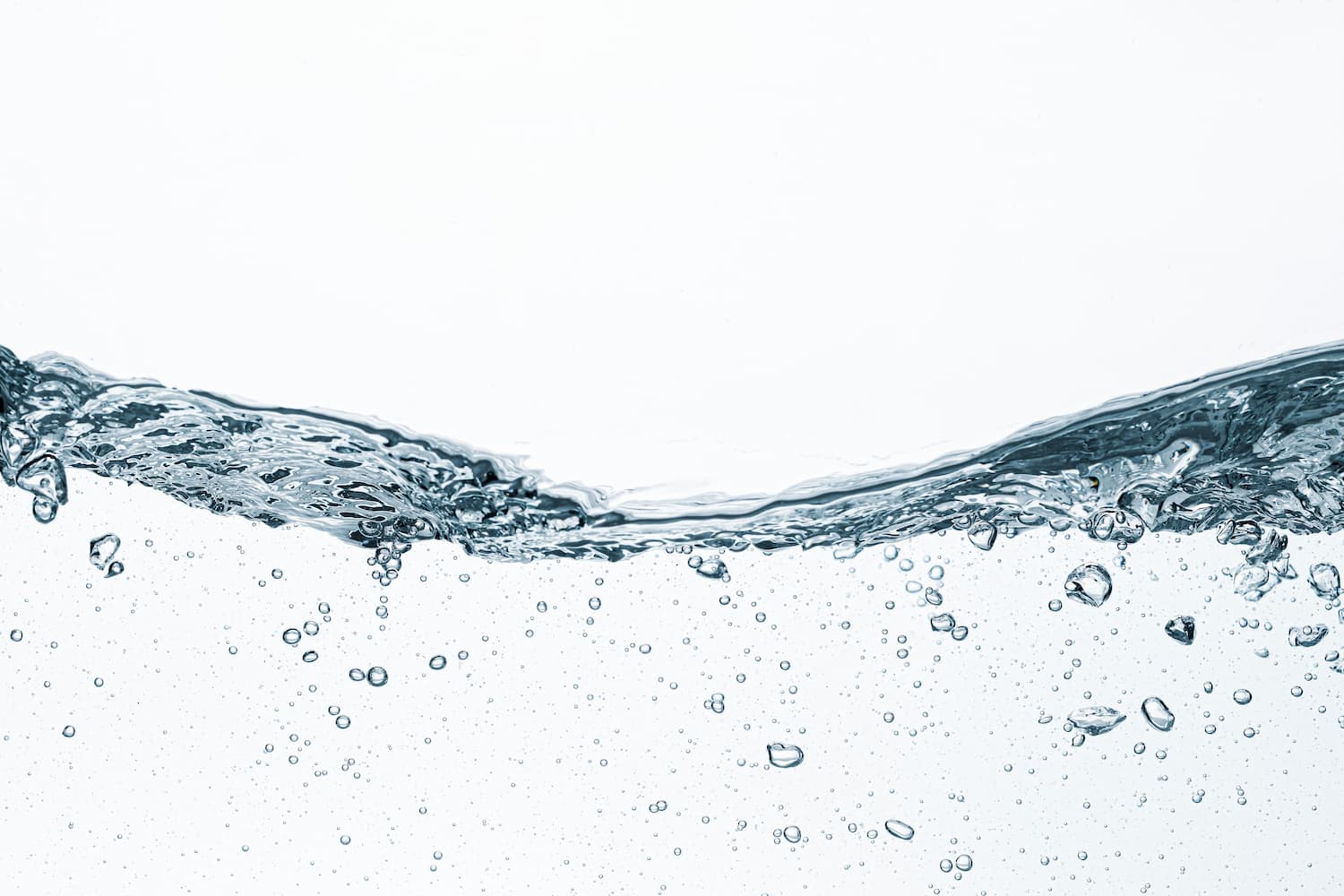
World Water Day aims to raise awareness of the lack of drinking water in many regions of the world.

How many Poles are single and why have they chosen to live alone?
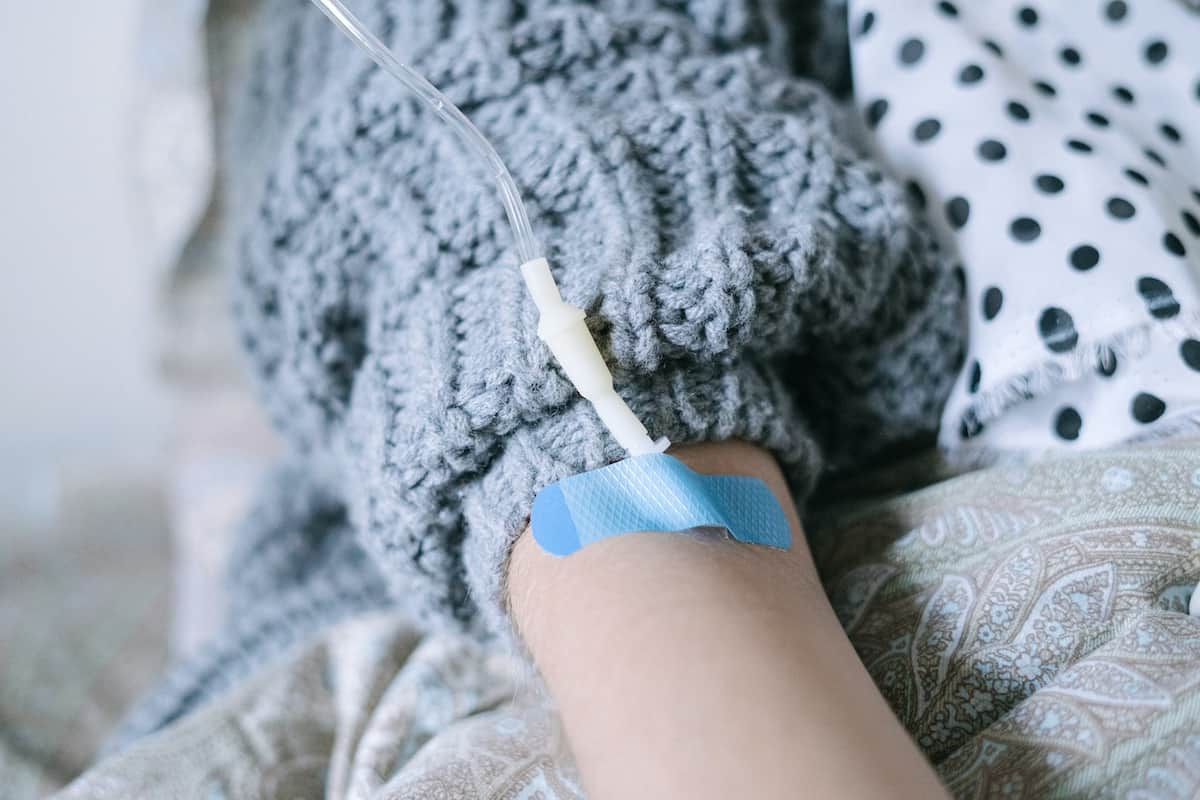
World Cancer Day encourages research and healthy lifestyles.



